The Ivory Coast mango season started on 12 April as planned and ended at the end of May. "An extension had been requested from the government, but it was not accepted, nor was the proposal to start the season earlier at the end of March/beginning of April due to climate change. In any case, the season went quite well despite the decreasing quantities and a coloring below expectations, which caused exports by air to be delayed until the end of the campaign," reports Joel Peguy Kamte, owner of the Kep Company. "Then it was the turn of supplies from Senegal, available until June: it seems that the country had two seasons, as the campaign was marked by a two-week production gap between one region and another."
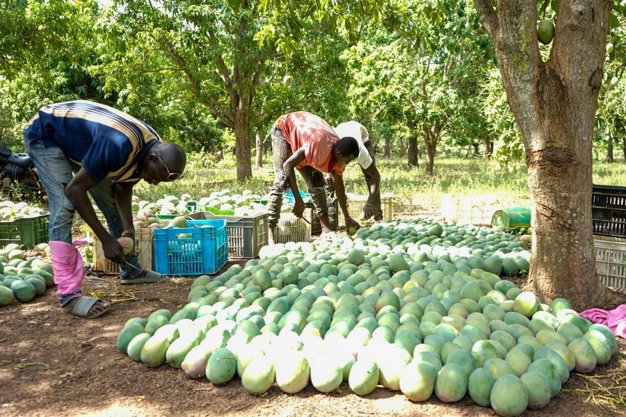
"The fresh mango season is over. However, we are now working with the dried product, which originates from both Côte d'Ivoire and Senegal, and discussing things with potential customers in Europe. There is nothing like direct contact to understand their needs and build lasting relationships."
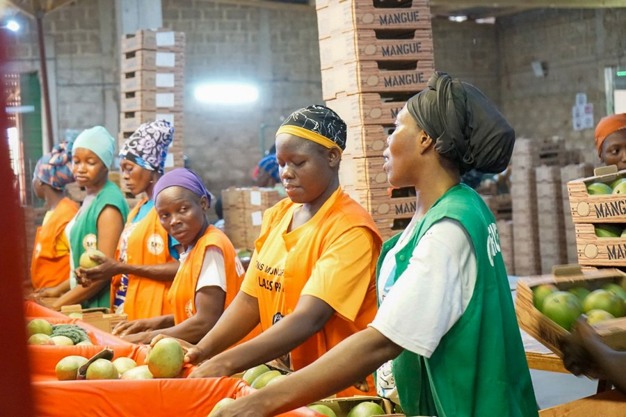 Women hand-pack each mango carton because they are more skilled than men
Women hand-pack each mango carton because they are more skilled than men
Airfreight
"Mangoes transported by air are highly valued for several reasons: they have a better color and an attractive size, making them more visually appealing, they are usually packed in 6 kg cartons with grades ranging from 8 to 12, which means that each fruit is uniform and neither too big nor too small, and airfreight reduces transit time, ensuring optimal freshness upon arrival in Europe," explains Kamte.
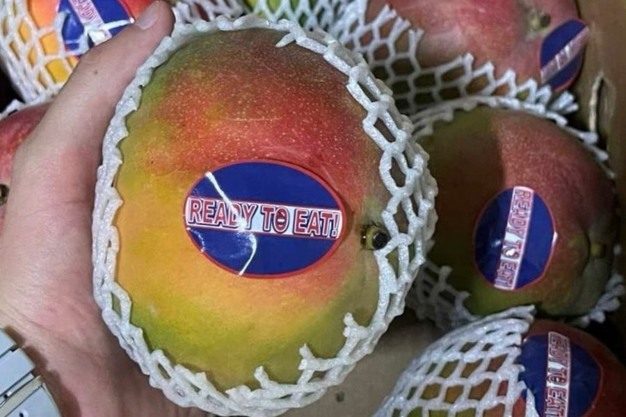
"Mangoes transported by air are however more expensive and, again, for several reasons: air transport is more expensive than sea transport, thus affecting the selling price, the higher quality justifies a higher price and, due to their quality, these mangoes are often sold as a premium product."
Furthermore, Kamte points out that European wholesalers such as specialized markets and gourmet shops are the main buyers of airfreighted mangoes. Nonetheless, the product also finds a place in high-end restaurants and hotels, which are looking for fresh, high-quality fruit and vegetables to satisfy their demanding clientele.
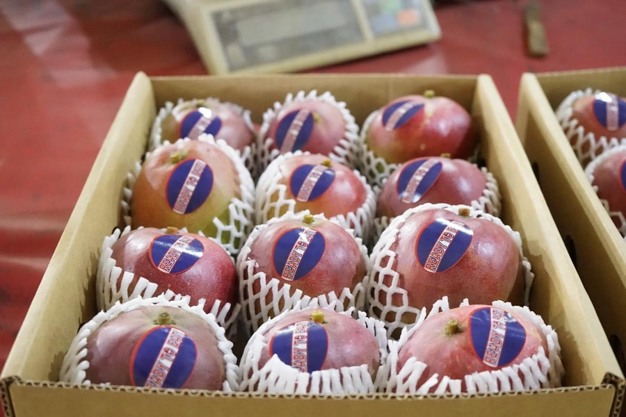
"European supermarkets, on the other hand, rarely offer airfreighted mangoes. In fact, they often aim to maintain competitive prices against a customer base that is generally less willing to pay a higher price for fruit. In addition, handling high-value fresh fruit and vegetables requires a specific infrastructure and fast and efficient supply chains, which can be difficult toi achieve for large retailers."
Play to see how a mango packing center in Côte d'Ivoire is structured (in French)
Dried mangoes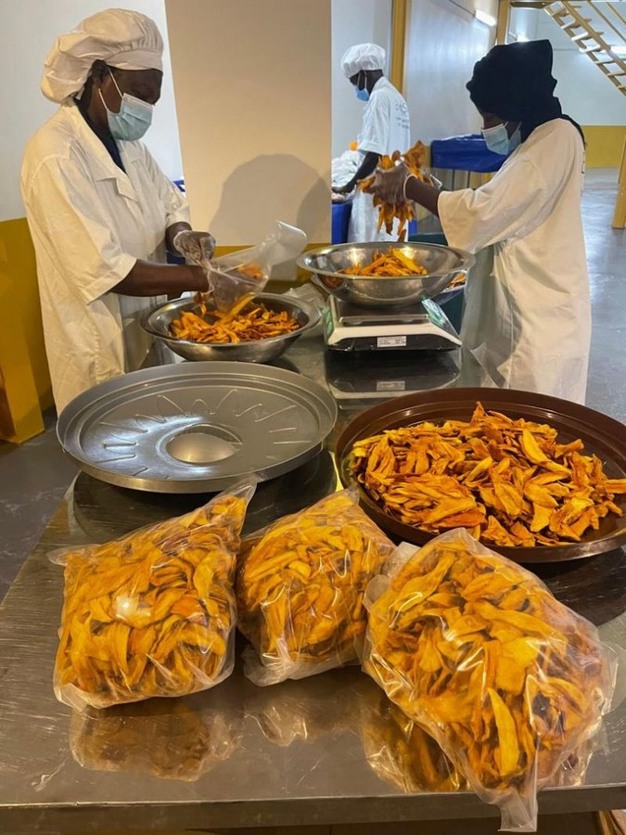 Dried mangoes arrived in Belgium on Friday, 6 September, and will reach the Italian market in the coming days. "Dried mangoes, which are rich in vitamins and antioxidants, are very popular in many geographical areas. They are produced in South-East Asia (India, Thailand) and West Africa (Burkina Faso, Ghana) and exported to Europe and North America, where the demand for healthy snacks continues to grow. The natural drying process preserves the sweet taste of the fruit and its essential nutrients, making dried mangoes a healthy and tasty snack. Our mango chips are carefully prepared by specially trained women, who cut the mangoes by hand, which are then packed in 100 to 500 grams and 1 to 20 kilograms packs, not counting any specific customer requests. This ensures exceptional quality."
Dried mangoes arrived in Belgium on Friday, 6 September, and will reach the Italian market in the coming days. "Dried mangoes, which are rich in vitamins and antioxidants, are very popular in many geographical areas. They are produced in South-East Asia (India, Thailand) and West Africa (Burkina Faso, Ghana) and exported to Europe and North America, where the demand for healthy snacks continues to grow. The natural drying process preserves the sweet taste of the fruit and its essential nutrients, making dried mangoes a healthy and tasty snack. Our mango chips are carefully prepared by specially trained women, who cut the mangoes by hand, which are then packed in 100 to 500 grams and 1 to 20 kilograms packs, not counting any specific customer requests. This ensures exceptional quality."
Next campaign to start in April 2025
The next harvest is scheduled for April 2025 and the aim is to increase production capacity. "Europeans eat with their eyes first. As a supplier, it is crucial to offer fruit that is not only delicious, but also visually appealing in order to attract the attention of consumers. To ensure optimal production management, we are starting to plan visits to the orchards to avoid last-minute surprises. In addition, for the next season we will go from 2 to about 5 containers per day, in order to meet the needs of all customers and cope with any extra demands. Our mangoes are GlobalGAP certified to guarantee high safety and quality standards."
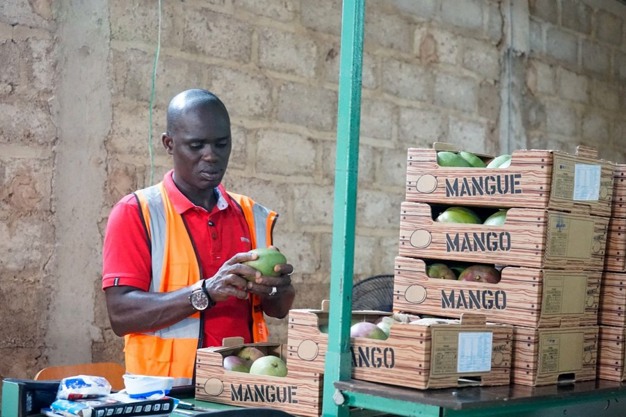 The importance of phytosanitary control before mangoes are shipped
The importance of phytosanitary control before mangoes are shipped
"There are several factors to keep in mind during the course of a campaign. In a mango plantation, for example, the space between the trees is key. There should be between 8 and 10 meters between trees, both in and between rows. This is crucial to allow plants to develop properly, ensuring proper sun exposure and air circulation. It is not only a question of maximizing production, but also of combating plant diseases. Of course the distance between trees differs depending on the mango variety, local climatic conditions and specific agricultural practices," concludes Kamte.
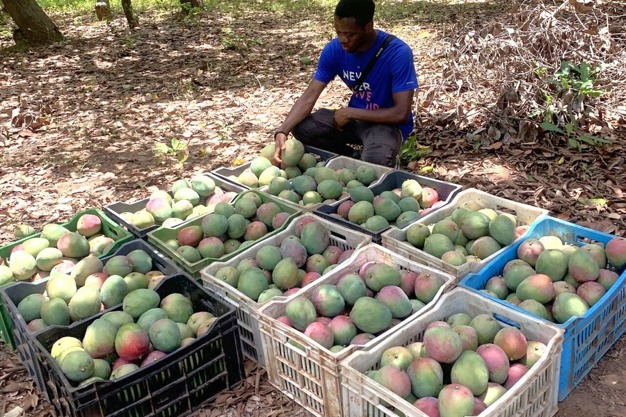
Photos provided by Joel Peguy Kamte
For more information:
Joel Peguy Kamte - owner
Kep Company
+39 3245444517 / +225 0171365153
info@kepcompany.com
kepcompany.com
